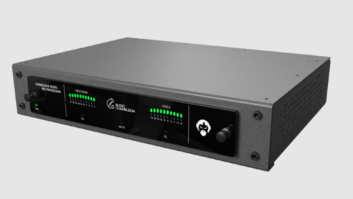Fourth in a series of blog posts exploring recommendations of the new National Recording Preservation Plan of the Library of Congress, which touches not only on radio but on audio in general and its place in our cultural history.
The National Recording Preservation Plan includes recommendations that focus on preserving digital audio files, both those converted from analog as well as those “born digital.”
“Born-digital audio is increasingly woven into the fabric of day-to-day information creation and exchange,” the authors stated.
“Studio-recorded music, radio broadcasts, sound for film and video, field recordings, personal recordings, podcasts, interviews, recorded meetings and conference proceedings, as well as audio blogs and audio tweets, are created en masse today in born-digital formats.” Further, digital audio files have become the accepted preservation format for legacy analog recordings, yet raise problems of documentation, storage and IT responsibilities.
The report suggested four steps (recommendations 2.4 to 2.7) to assist technicians and managers in digital audio file preservation. Quoting directly here:
-Preservation Workflows for Audio Materials — Develop tools, practical implementation models, best practices and high-efficiency workflows for digitizing analog recordings.
-Metadata Standards for Digital Audio Files — Develop recommendations for metadata guidelines and best practices related to digital audio files that incorporate established standards and maximize interoperability.
-Tools to Support Preservation throughout the Content Life Cycle — Encourage the development of tools that support adherence to standards and best practices in the creation of sound recordingsand in the management of their preservation.
-Best Practices for Creating and Preserving Born-Digital Audio Files — Research, develop, and promote improved and scalable processes to package multipart and metadata-rich digital audio objects, and to develop (and update) practices for the transformation and management of these objects when they are archived for the long term. Define preferred formats (including metadata) in order to maximize the initial creation of born-archival files by those who produce sound recordings, or develop recommendations for preferred file formats, embedded and/or associated metadata, and object packaging.
A separate set of recommendations in the “blueprint” section of the report deals with audio preservation management.
The details of the above make for dry reading (involving implementation models, public/private partnerships, best practices, standardized metadata schemas and so forth); but the overall message is clear: Failure to meet the preservation challenge “will place our nation’s audio cultural heritage at further risk.”
Radio stations, as content creators and guardians of a lot of recorded content, have a stake.












